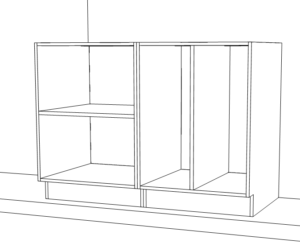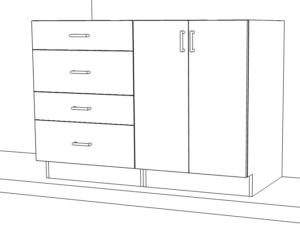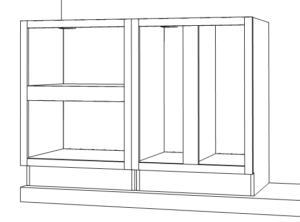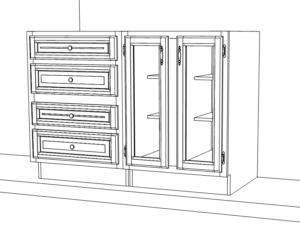We absolutely love cabinets. Aside from their practical use (they store things, organize our spaces, hide items that might otherwise be clutter), they can be the most beautiful part of a kitchen, bathroom, or bedroom. Not all cabinets are created equal though, and stock cabinets can sometimes have a negative effect on a room, making it look cheap and cluttered. That’s why we prefer semi-custom or custom cabinets. Not only can the layout be designed to best fit your life, you can choose every detail from the style to the finish.
With so many choices available, you can make yourself dizzy trying to decide which ones are right for you. Where do you even start? The team at Ascend is here to break it down. Read on to learn the basic types of cabinets and how to choose the style that’s right for you.
Framed or Frameless?
To fully understand the different kinds of cabinets, you’ll need to know the difference between framed and frameless. (Don’t worry, we’ll keep it simple.)
Framed cabinets consist of a cabinet box with a face frame (which basically looks like a picture frame) fixed to the front. The hinges are attached to the side of the frame and the door goes on top. This is the traditional American way of building cabinets.
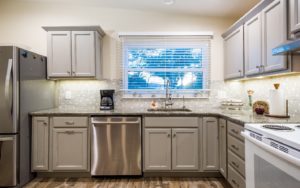
This kitchen uses framed cabinets
Frameless cabinetry has no frame on the front of the box, so the doors have a flatter, sleeker look. Frameless is sometimes called “full access” cabinetry because it offers greater accessibility. This is a European way of making cabinets that is very popular with Americans seeking simple, more contemporary cabinet design.
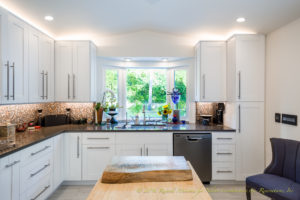
Example of Frameless Kitchen Cabinets
Another type of cabinet is the framed-inset.
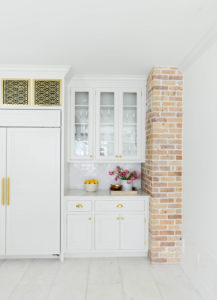
These cabinets are Framed-Inset
This refers to the type of door that is completely flush with the cabinet’s face frame when it is closed. Framed-inset cabinet doors, drawers and openings leave a large amount of the cabinet box visible, which means that the interior surface of the cabinets should be stained, painted or sealed.
Pros and Cons
So how do you choose? Here are some pros and cons to help you decide what works best for you.
Frameless Cabinets
Pros:
- Easier to build, since a face frame is not needed
- Easier to access things inside the cabinets, since there is no center stile
- Cabinets and drawers are usually larger
- Perfect for smaller kitchens where every inch of space is valuable
- Great for those who love sleek, modern design styles
Cons:
- There are design limitations, as you can only use full-overlay doors
- They rely on a thicker cabinet box for strength and stability
- Usually more expensive
Framed Cabinets
Pros:
- Usually stronger, since the doors are attached to the face frame
- More design possibilities, as you are not limited to full-overlay doors like in frameless cabinets, and you can get creative with decorative hinges
- They are the preferred option for those who like a more traditional look
- Less expensive than frameless
Cons:
- There is less space, so framed cabinets are better in rooms with lots of cabinet space
Where Do We Go From Here?
After you’ve decided between framed or frameless cabinets, you then have a myriad of door styles and finishes to choose from. And then there’s the door hardware (handles and hinges). When it comes to custom cabinets, the possibilities are endless.
If you’re still not sure what to do about your custom cabinets, let the Ascend design team and our custom cabinet makers help. We’ll will help you decide on a style and design you like and show you options you’re sure to fall in love with.
We are here to help.
Give us a call, drop us an email or simply fill out the form below and we’ll get started turning your dreams into a reality.



